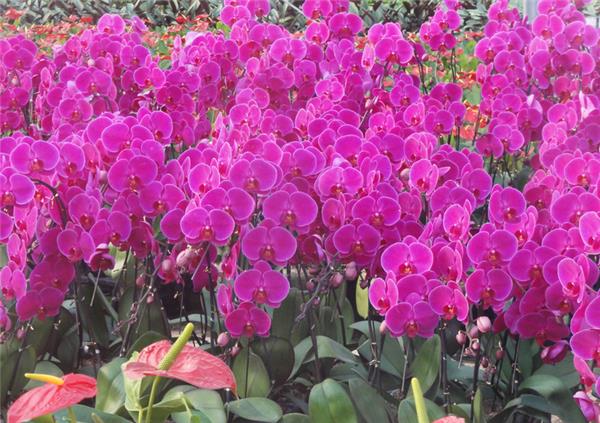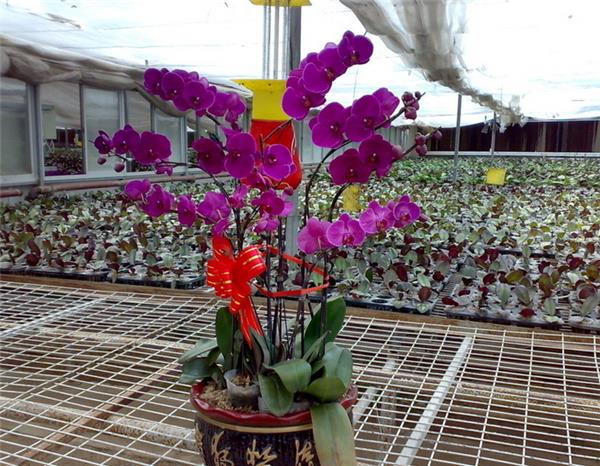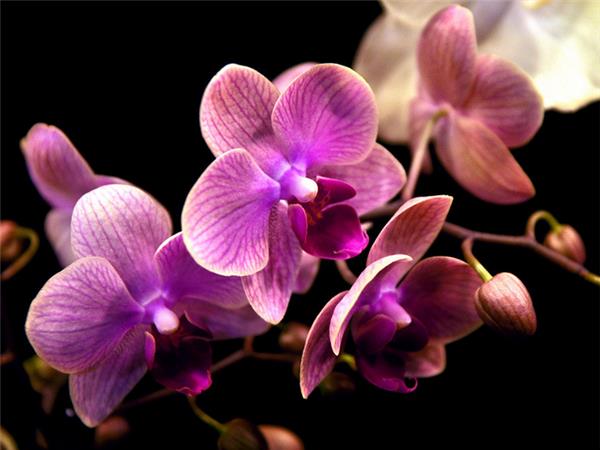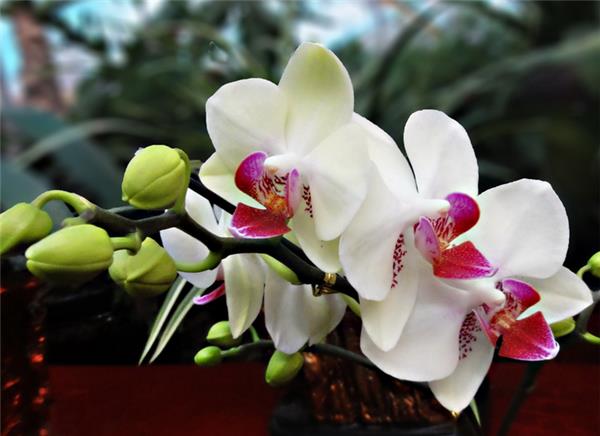How to raise butterflies and orchids
Butterfly orchids have beautiful appearance and gorgeous colors, and have the reputation of "queen of orchids", but many flower friends do not know how to raise butterfly orchids. Let's give a brief introduction.

How to raise butterflies and orchids
How to raise butterfly orchids? It should be soaked in 1000 times carbendazim solution for 2-3 minutes, then rinse with water after it is removed, then gently clean the culture medium attached to the root with a short brush, and then rinse with clean water, otherwise it is easy to mildew. After sterilization, the seedlings were planted with fine water moss, which should be soaked for 3-4 hours, then washed and squeezed dry, and sterilized.
When planting, wrap the roots of the seedlings with water moss and plant them in a suitable soft basin. The water moss should be loose and tight, place in a semi-sprouting place, maintain a relative humidity of 70%-80%, and do not water within 2-3 days after planting. In the later stage, we should pay attention to ventilation and regular irrigation.
The temperature requirements of Phalaenopsis in large, middle and small days are basically the same, no more than 30 ℃, 23 ℃ for small seedlings and 20 ℃ for large seedlings at night. It requires 20: 24 ℃ in daytime, 17: 20 ℃ in night, 25: 28 ℃ in daytime and 20: 22 ℃ in night after the first flower. The temperature is heated by a heater when the temperature is low, and the fan-water curtain can be used to cool the temperature when the temperature is high.

The best humidity requirement is more than 90% in the growth stage, 7080% in the flowering treatment stage and 50% after flowering. Humidity can be controlled by measures such as ventilation with water curtain and spraying humidity in ground space.
Phalaenopsis air root has a strong absorption capacity, can absorb oxygen, nutrients, water, etc., too much water will cause suffocation to the root, so Phalaenopsis watering should be seen dry with fine water irrigation, operation as far as possible not to let water stay in the leaf concave or growth point, in order to prevent mildew or infection, irrigation to the soft basin bottom hole can be overflowed.
The common diseases and insect pests of Phalaenopsis are soft rot, brown spot, anthrax, bituminous coal disease, virus disease, shell insects, red spiders and so on. Mainly adopt the principle of prevention, strengthen cultivation and management measures, improve ventilation conditions, reasonably control the placement density, and keep the environment clean. Spray insecticides and fungicides regularly. If diseased plants are found, the source of infection should be cleared in time, the diseased leaves and remains should be removed, and the seriously diseased plants should be isolated or destroyed to prevent the spread of diseases and insect pests.

Four reasons for the failure of Family cultivation
1. Watering too frequently: friends who cultivate Phalaenopsis are always worried about the lack of water, regardless of whether the cultivation medium is dry or not, watering every day, resulting in serious root rot.
2. The temperature is too low: usually the flowering plants of Phalaenopsis are on the market in early spring, and they are generally appreciated in the living room after buying them home. Although the daily temperature in these places is enough, the night temperature is a little too low. On the other hand, most of the professionally cultivated orchids are in well-equipped greenhouses, in contrast, the temperature and humidity at home are not enough, so the growth of the plant tends to weaken day by day. Therefore, sometimes, no matter how well maintained, orchids still do not blossom.

3. Excessive fertilization: apply fertilizer as soon as there is fertilizer, and do not pay attention to the concentration, thinking that if you apply fertilizer, you will grow faster. It should be noted that Phalaenopsis should be fertilized with thin fertilizer, a small amount of fertilizer for many times. Keep in mind that "replenishment" should not be excessive, or it will be counterproductive.
4. Small plants grow large pots: feel that using large pots can give Phalaenopsis a relaxed environment and sufficient materials. In fact, after using a large basin, the water plant is not easy to dry, it is important to know that Phalaenopsis likes ventilation, ventilation is comfortable.
Related
- Wuhan Hospital Iron Tree Blooming Result Was Instantly Frightened by the Gardener Master
- Which variety of camellia is the most fragrant and best? Which one do you like best?
- What is the small blue coat, the breeding methods and matters needing attention of the succulent plant
- Dormancy time and maintenance management of succulent plants during dormancy
- Minas succulent how to raise, Minas succulent plant pictures
- What are the varieties of winter succulent plants
- How to raise succulent plants in twelve rolls? let's take a look at some experience of breeding twelve rolls.
- Attention should be paid to water control for succulent plants during dormant period (winter and summer)
- Watering experience of twelve rolls of succulent plants
- Techniques for fertilizing succulent plants. An article will let you know how to fertilize succulent plants.



